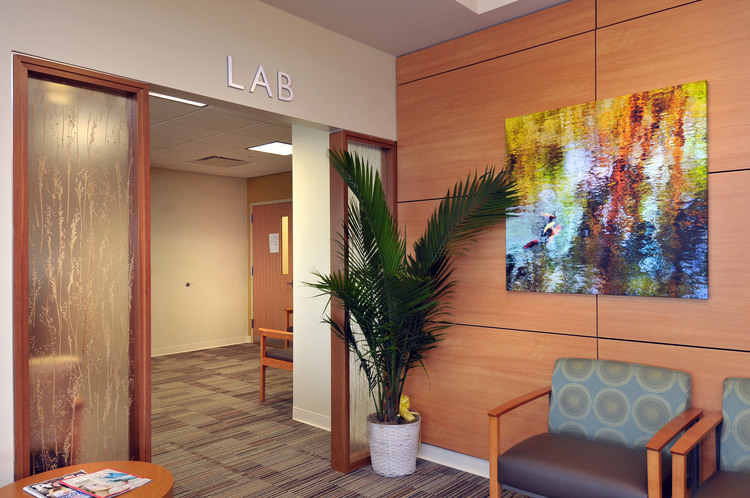Mainstream awareness of LEED came to light in a recent article that appeared in the highly acclaimed Architectural Digest magazine. It was about actor Anna Faris and her purchase of a home in Pacific Palisades that is “LEED-certified, with solar-powered utilities, an advanced water filtration-recycling system, and a garage with a Tesla charger.”
Like Faris, there is also a growing population of environmentally conscious home owners and businesses that are complying with LEED standards. They choose to have both the exterior and interior of their spaces evoke a sense of natural, chemical-free living. The art they choose reflects a natural ambiance created by artists who are also aware of the importance of enhancing our environments with positive images.
Evidence Based Design is Another Important Field of Study
Another related acronym you see affiliated with architecture, design and art today is EBD — Evidence Based Design. This is a field of study that has become popular in healthcare to improve patient and staff well-being, patient healing, stress reduction and safety. EBD borrows terminology and ideas from disciplines such as environmental psychology, architecture, neuroscience and behavioral economics.
Dr. Roger Ulrich, professor of architecture at Chalmers University in Gothenburg, Sweden is often credited with planting the seed of EBD. However, other sources point to the fact that the evidence-based design movement began in the 1970s with Archie Cochrane’s book Effectiveness and Efficiency: Random Reflections on Health Services. The patient-centered care movement that began in the United States in 1978 as other harbingers of EBD.

Experts agree it is important to focus on art and design in patient’s rooms, hospital corridors and work spaces that enhances health and well-being. Many scientific studies have proven that art has the capacity to positively transform one’s physiological state and perception. Art can have calming effects in challenging physical situations. There is an increase in bringing art to hospitals, doctor’s offices, prisons and other environments where physical and psychological tensions abound.
Fran Eber, an artist who won an award from Manhattan Arts International in its online exhibition “The Healing Power of ART ”, feels very strongly about art for healing. In an article about her on this website she states, “Evidence-Based Art is a broad category and one that can be overwhelming. The way I like to think about it is to use the metaphor of cooking. When I create art, I think organic, I imagine myself cooking a meal and keeping those ingredients as close to nature and as pure as I can possible get. In my art, the same same principles apply; keeping my subject matter simple and natural. Something wholesome that can be visually digested and emotionally nourishing.”
Choose Environmentally Friendly Healing Art From Our Online Art Gallery
Whether you are a homeowner or a medical facility interested in bringing more healing art into your environment, on this website you will find art that fits the criteria emphasized by these two fields of study. The Healing Power of ART & ARTISTS community strongly believes when we surround ourselves with art that has positive subjects, colors, compositions and designs our mental states are positively impacted. Visit The Healing Power of ART & ARTISTS online art gallery.
Healing Art in Healthcare Facilities Using LEED and EBD Standards
Art is now being seriously considered when hospitals and healthcare facilities prepare their budgets for essential furnishings, in both early construction stages and renovations. Artwork is no longer considered a decorative or frivolous additional component to their design. It is an integral part of their overall plan.
Barbara Markoff, leading art consultant states, “Public artwork serves many functions in healthcare facilities. Strategically placed artwork helps soothe and welcome patients and visitors. It also assists with wayfinding. Artwork helps clarify the boundaries of public and non-public areas of hospitals.”

Leave a Reply